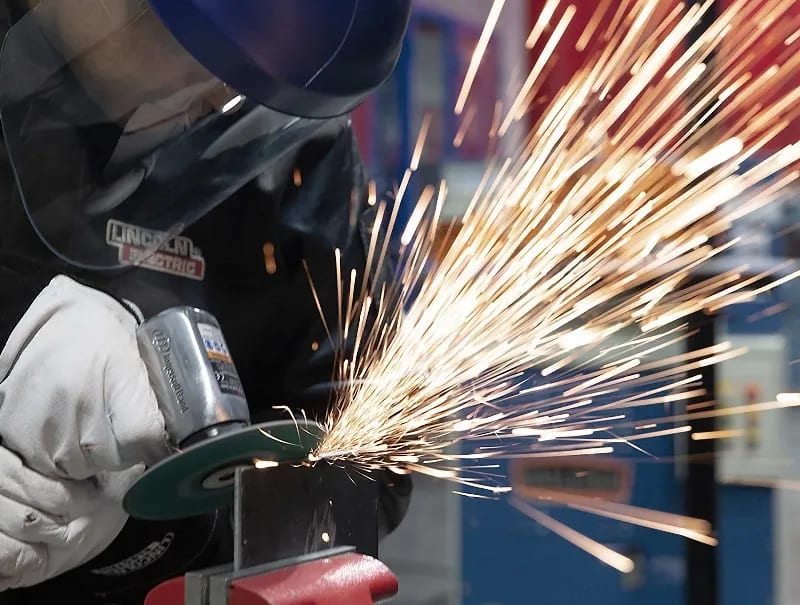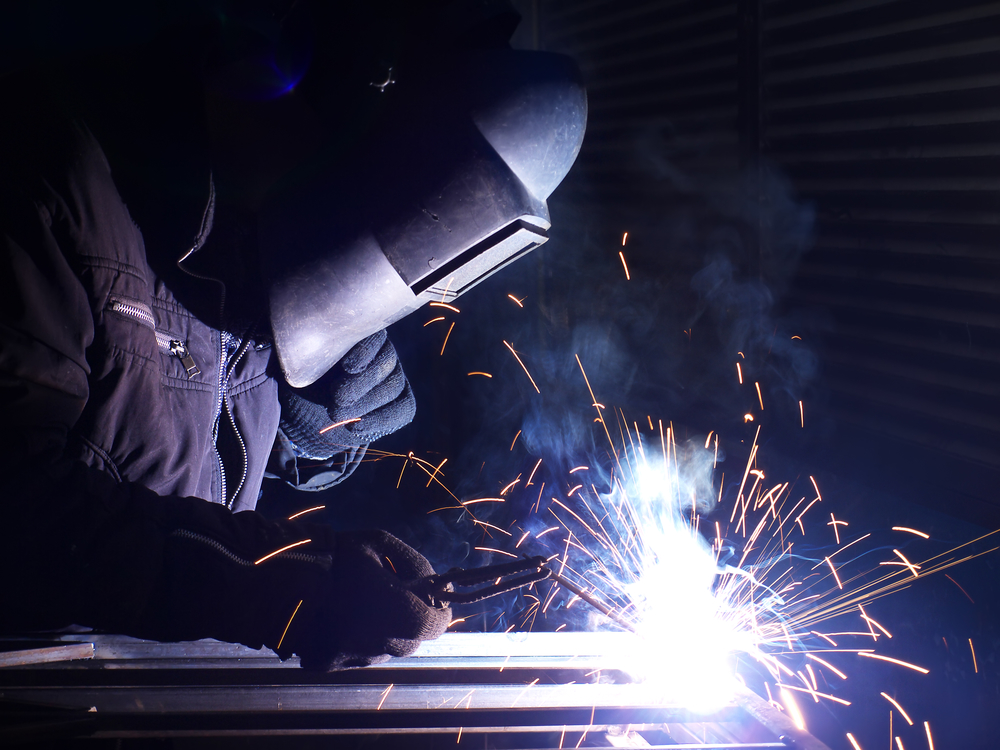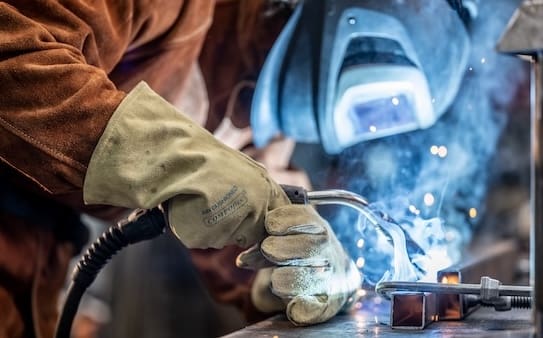Usual Welding Repair Issues and How to Address Them Efficiently
Welding repairs usually run into a range of concerns that can threaten the honesty of the final item. Common issues include inadequate infiltration, porosity, and imbalance, to name a few. Each problem offers unique obstacles that call for certain methods for resolution. Comprehending these concerns is essential for welders intending to enhance their outcomes and abilities. This discussion will check out these common welding repair work concerns and reliable techniques to resolve them.
Inadequate Infiltration
Insufficient penetration happens when the weld metal fails to fully fuse with the base material, causing weak joints and potential architectural failures. This problem frequently comes from not enough warmth input, inaccurate electrode angle, or inappropriate welding rate. Welders may run into inadequate penetration due to a mistake of the essential parameters for a specific material density or type. In addition, contamination on the base material's surface can hinder reliable bonding, aggravating the issue. To resolve insufficient penetration, welders must ensure suitable setups on their tools and keep a clean job surface area. Routine assessment of welds is suggested to recognize any shortages early, enabling timely modifications and the avoidance of compromised architectural stability in welded settings up.
Porosity
Porosity is a common issue in welded joints that manifests as small gas bubbles entraped within the weld steel. This problem can endanger the stability of the weld, leading to reduced toughness and potential failing under tension. Montana Mobile Welding and Repair. Porosity normally arises from contamination, moisture, or incorrect welding strategies, which permit gases to run away into the molten weld swimming pool. To address porosity, welders must assure correct surface prep work, keep a tidy workplace, and use appropriate welding parameters. Furthermore, choosing the best filler material and protecting gas can reduce gas entrapment. Routine inspection and screening of welds can aid determine porosity early, assuring prompt rehabilitative activities are taken, thereby maintaining the high quality and reliability of the welded structure
Imbalance
Misalignment in welding can occur from numerous elements, consisting of improper configuration and thermal growth. Recognizing the origin is essential for efficient resolution. A number of improvement strategies are offered to straighten components and guarantee architectural integrity.
Reasons of Imbalance
Welding misalignment often originates from a variety of underlying problems that can jeopardize structural integrity. One primary reason is improper fit-up of elements before welding, which can lead to voids and uneven surface areas. Variations in thermal growth during the welding process can also result in distortion, particularly if the materials being joined have various coefficients of growth. Additionally, insufficient securing and fixturing might fall short to hold components securely in area, leading to motion throughout welding. Inadequately conserved equipment, consisting of welding devices and devices, might present variances in the weld bead, more adding to imbalance. Driver error, stemming from not enough training or experience, can also play a significant duty in producing misaligned welds.

Improvement Strategies Readily Available
Addressing misalignment properly calls for a combination of corrective methods customized to the specific concerns available. One typical technique is using jigs or fixtures to hold components in the correct placement during welding, guaranteeing constant placement. In addition, pre-heating the materials can help in reducing distortion and boost fit-up. For substantial imbalance, mechanical realignment methods, such as utilizing hydraulic jacks or clamps, can be utilized to remedy the placement prior to welding. Post-weld heat treatment might additionally be essential to ease tensions created by misalignment. Cautious evaluation and modification during the arrangement phase can avoid imbalance issues from becoming considerable troubles, advertising a smoother welding procedure and enhancing general structural stability.
Distortion
Distortion is a typical difficulty in welding that can occur from different variables, including irregular cooling and heating. Comprehending the reasons for distortion is essential for implementing effective avoidance methods. Resolving this problem not only improves architectural stability yet also boosts the total quality of the weld.
Sources of Distortion
When subjected to the extreme warm of welding, products usually undertake modifications that can cause distortion. This phenomenon largely occurs from thermal development and tightening during the welding procedure. As the weld area warms up, the product increases; upon cooling, it contracts, which can create internal tensions. Additionally, uneven heating across a workpiece can intensify these tensions, leading to warping or bending. The kind of material additionally plays a substantial duty; steels with differing thermal conductivity and coefficients of development might respond in a different way, resulting in unforeseeable distortions. Inadequate joint design and insufficient fixturing can add to misalignment throughout welding, raising the possibility of distortion. Understanding these causes is crucial for reliable welding repair service and avoidance strategies.
Prevention Techniques
Effective prevention methods for distortion throughout welding emphasis on controlling warmth input and ensuring correct joint style. Maintaining a consistent warm input helps to reduce thermal expansion and contraction, which can cause distortion. Utilizing methods such as pre-heating the workpiece can also lower the temperature level gradient, promoting uniform heating. Additionally, selecting appropriate joint layouts, such as T-joints or lap joints, can enhance stability and minimize tension focus. Implementing correct fixturing to protect the workpieces in location better aids in keeping placement throughout the welding process. Staggered welding series can distribute warmth a lot more uniformly, protecting against localized distortion. By using these approaches, welders can considerably lower the probability of distortion and boost the general high quality of their welds.
Breaking
Breaking is a typical problem come across in welding fixings, commonly resulting from different factors such as incorrect air conditioning prices, material selection, or inadequate joint prep work. The event of splits can substantially jeopardize the stability of the weld, bring about prospective failings throughout procedure. To resolve this issue, welders should initially examine the source, ensuring that materials work and appropriately chosen for the certain application. Furthermore, managing the cooling price throughout the welding process is necessary; rapid air conditioning can induce stress and result in breaking. Correct joint style and prep work additionally add to lessening the threat. Carrying out these techniques can improve weld high quality and longevity, inevitably decreasing the possibility of breaking in ended up weldments.

Incomplete Combination
A considerable problem in welding repairs is incomplete blend, which occurs when the weld steel does not properly bond with the base product or previous weld passes - Fabrication. This defect can bring about weak points in the joint, possibly compromising the honesty of the welded framework. Aspects adding to insufficient combination include insufficient warmth input, incorrect welding method, and contamination of the surface areas being joined. To resolve this problem efficiently, welders ought to guarantee appropriate pre-weld cleaning and surface area prep work, along with change their welding specifications to attain adequate infiltration and fusion. Routine assessment throughout the welding procedure can additionally help determine insufficient blend early, permitting timely rehabilitative steps to improve the total quality of the weld
Overheating
While welding repair work can enhance architectural stability, overheating provides a considerable challenge that can result in material deterioration. Excessive warmth throughout welding can change the mechanical buildings of steels, resulting in lowered stamina, increased brittleness, and bending. This sensation is specifically i was reading this important in high-stress applications where structural integrity is paramount. Determining getting too hot can involve visual examinations for staining or distortion, along with monitoring temperature during the welding procedure. To reduce the dangers connected with overheating, welders need to employ suitable methods, such as managing warmth input, adjusting traveling rate, and making use of suitable filler products. In addition, implementing pre- and post-weld warmth treatments can assist bring back product properties and boost the overall top quality of the repair, visit here guaranteeing long-lasting efficiency and safety and security.
Regularly Asked Concerns
What Are the Common Signs of a Welding Flaw?

Exactly How Can I Evaluate My Welds for Top quality?
To check welds for quality, one can make use of aesthetic evaluations, ultrasonic testing, and radiographic approaches. Each technique ensures architectural integrity, identifies flaws, and validates adherence to specified standards, ultimately boosting the dependability of the welded joints.
What Safety Preventative Measures Should I Take While Welding?
When welding, one ought to prioritize security by using suitable personal safety equipment, guaranteeing correct air flow, protecting combustible materials away, maintaining a clean workspace, and knowing surroundings to avoid mishaps and injuries.
Can I Repair a Weld Without Redesigning the Entire Joint?
Fixing a weld without redoing the whole joint is feasible, relying on the damage (Montana Mobile Welding and Repair Belgrade Welding). Strategies such as grinding, including filler product, or using a welding smaw welding process can effectively attend to specific defects while preserving the bordering framework
What Tools Are Necessary for Efficient Welding Services?
Essential tools for efficient welding repairs include a welding machine, wire brush, grinder, safety equipment, clamps, and filler products. Each device plays an important duty in ensuring top quality and safety and security throughout the repair service procedure. Porosity commonly arises from contamination, dampness, or inappropriate welding methods, which permit gases to escape into the molten weld pool. Improperly maintained tools, including welding devices and devices, might present inconsistencies in the weld grain, additional adding to imbalance. When subjected to the intense warm of welding, products often undergo modifications that can lead to distortion. Splitting is a typical problem come across in welding repairs, commonly resulting from different factors such as inappropriate air conditioning rates, material option, or insufficient joint preparation. A considerable problem in welding fixings is insufficient blend, which takes place when the weld metal does not effectively bond with the base product or previous weld passes.